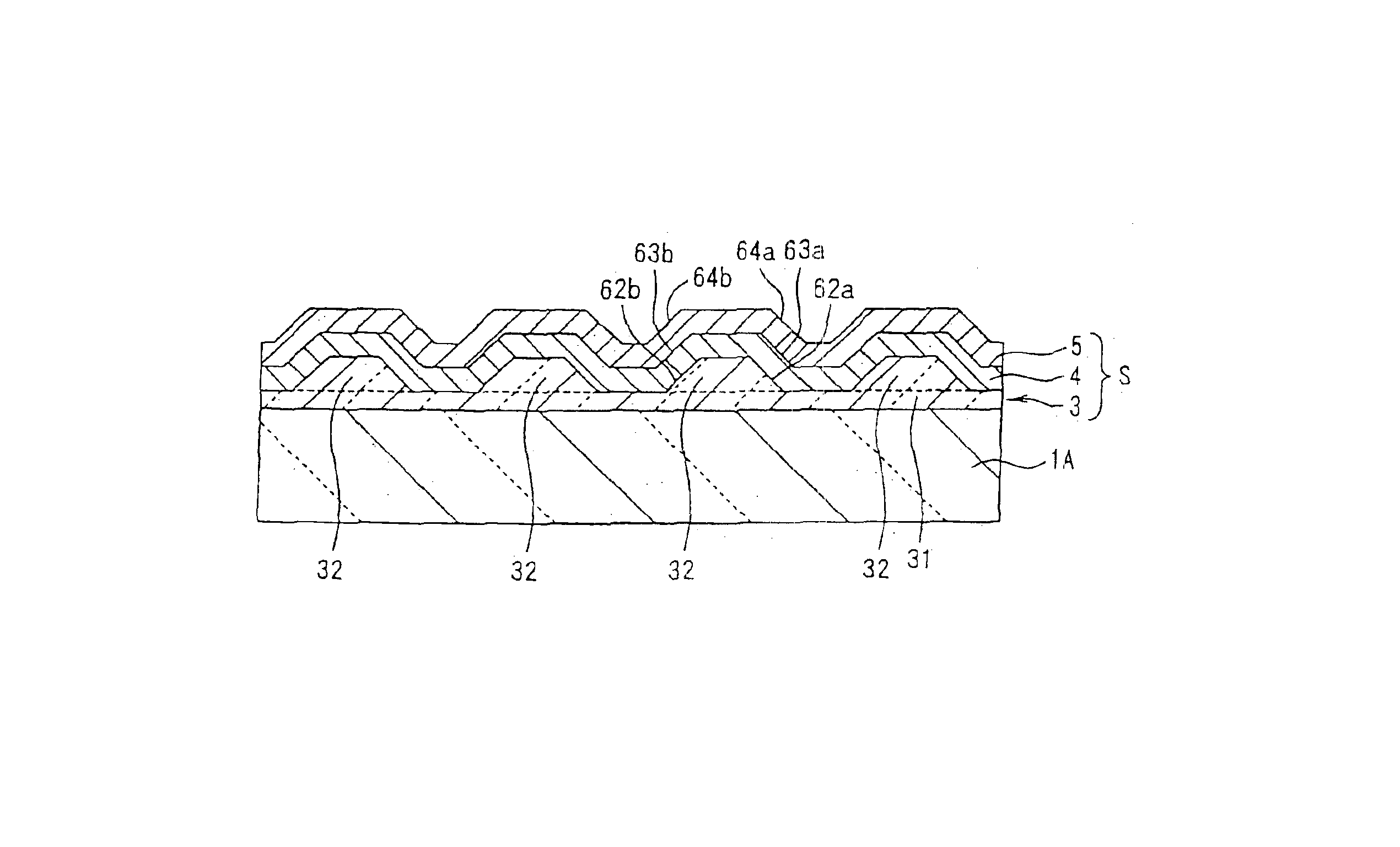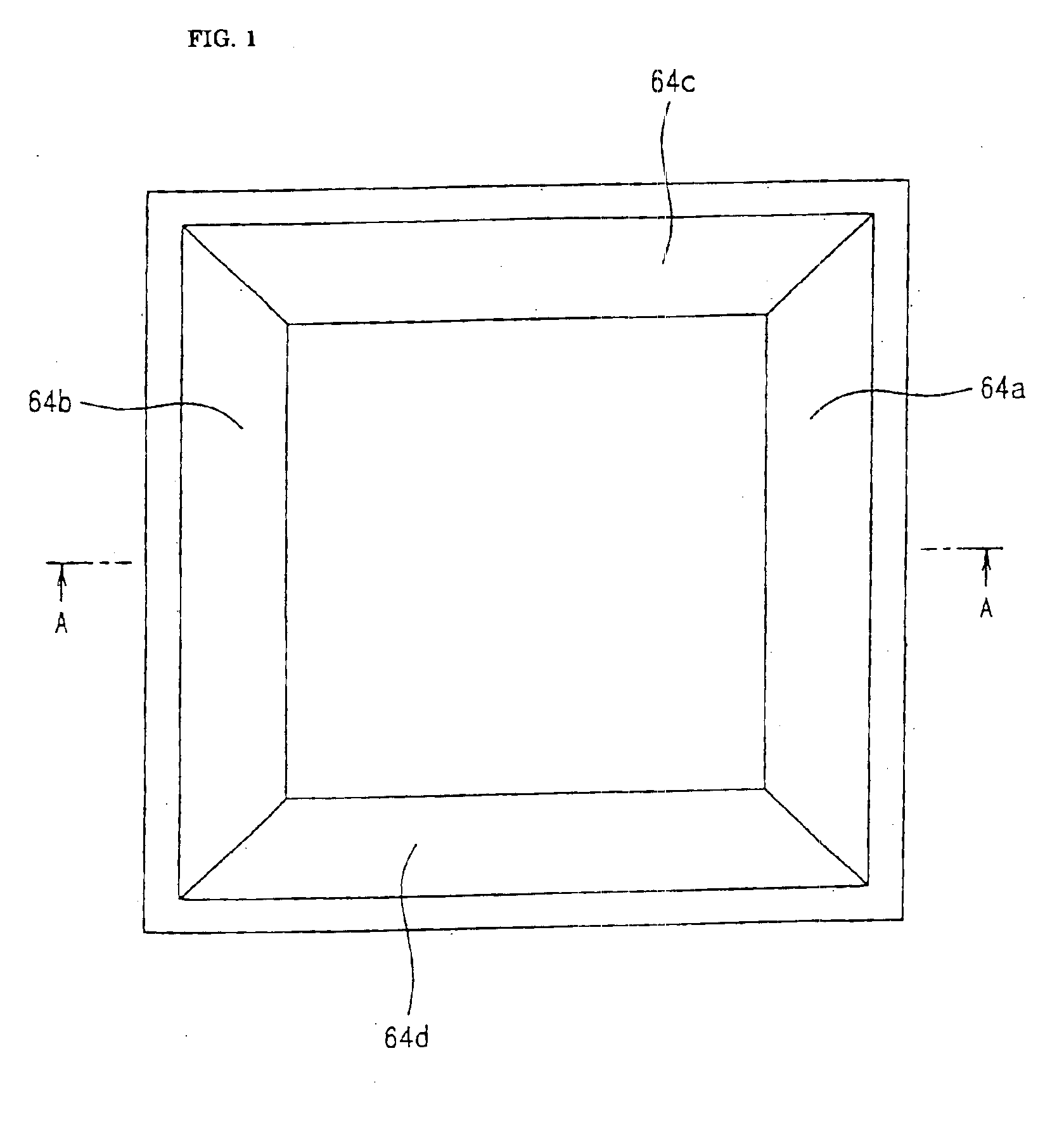Organic electro-luminescence element and the manufacturing method thereof
a technology of electroluminescence element and organic electroluminescence, which is applied in the direction of luminescence screen of discharge tube, transportation and packaging, natural mineral layered products, etc., can solve the problems the decrease of the luminous efficiency, so as to reduce the numerical aperture and the effect of decreasing the numerical aperture of the organic electroluminescence display
- Summary
- Abstract
- Description
- Claims
- Application Information
AI Technical Summary
Benefits of technology
Problems solved by technology
Method used
Image
Examples
first embodiment
[0058]FIGS. 1 and 2 provide an explanation of an organic electroluminescence display corresponding to the organic electroluminescence element of the present invention. FIG. 1 is a plan view showing an area (an area corresponding to the pixel region divided by the bank 17 in FIG. 11) of the organic electroluminescence display, and FIG. 2 is a sectional view taken along plane A—A of FIG. 1. FIG. 2 shows a glass substrate 1A in the state just before a cumulate body S is formed (a state where many kinds of driving elements are formed on the glass substrate, and the bank 17 is formed).
[0059]On the glass substrate 1A, a cumulate body S is formed via a projection 2 made of a light-transmissive insulating material. This projection 2 is formed by forming a thin film made of light-transmissive materials, such as silicon dioxide (SiO2) and silicon nitride (Si3N4), on the glass substrate 1A, by the plasma CVD method or the sputtering method, at 400 nm in thickness, for example, and then pattern...
second embodiment
[0068]FIGS. 1 and 3 provide an explanation of an organic electroluminescence display corresponding to the organic electroluminescence element of the present invention. FIG. 1 is a plan view showing an area (an area corresponding to the pixel region divided by the bank 17 in FIG. 11) of this organic electroluminescence display, and FIG. 3 is a sectional view taken along plane A—A of FIG. 1. FIG. 3 shows a glass substrate in the state just before a cumulate body S is formed (a state where many kinds of driving elements are formed on the glass substrate, and the bank 17 is formed).
[0069]On this glass substrate 1A, a cumulate body S is formed via a projection 2. The projection 2 is made of an insulating material different from the first insulating film 21 or the first glass substrate 1A. The first insulating film 21 is made of silicon nitride (Si3N4), and the projection 2 is made of silicon dioxide (SiO2).
[0070]The first insulating film 21 is made by the plasma CVD method with a thickne...
third embodiment
[0079]FIGS. 1 and 4 provide an explanation of an organic electroluminescence display corresponding to the organic electroluminescence element of the present invention. FIG. 1 is a plan view showing an area (an area corresponding to the pixel region divided by the bank 17 in FIG. 11) of this organic electroluminescence display, and FIG. 4 is a sectional view taken along plane A—A of FIG. 1. FIG. 4 shows a glass substrate 1A in the state just before a cumulate body S is formed (a state where many kinds of driving elements are formed on the glass substrate, and the bank 17 is formed).
[0080]In this embodiment, slopes 62-64 of both electrode layers 3 and 5 and an organic luminous layer 4 are formed by making an anode layer (a light-transmissive electrode layer) 3 made of ITO (In2O3—SnO2) in a shape having a convex section 32 corresponding to the slopes. The anode layer 3 is formed in the following method.
[0081]First, the first ITO thin film 31 is made by the sputtering method on the glas...
PUM
| Property | Measurement | Unit |
|---|---|---|
| thickness | aaaaa | aaaaa |
| thickness | aaaaa | aaaaa |
| thickness | aaaaa | aaaaa |
Abstract
Description
Claims
Application Information
 Login to View More
Login to View More - R&D
- Intellectual Property
- Life Sciences
- Materials
- Tech Scout
- Unparalleled Data Quality
- Higher Quality Content
- 60% Fewer Hallucinations
Browse by: Latest US Patents, China's latest patents, Technical Efficacy Thesaurus, Application Domain, Technology Topic, Popular Technical Reports.
© 2025 PatSnap. All rights reserved.Legal|Privacy policy|Modern Slavery Act Transparency Statement|Sitemap|About US| Contact US: help@patsnap.com



